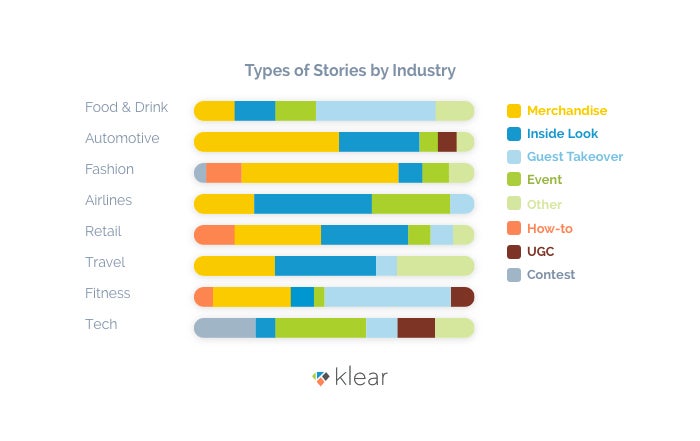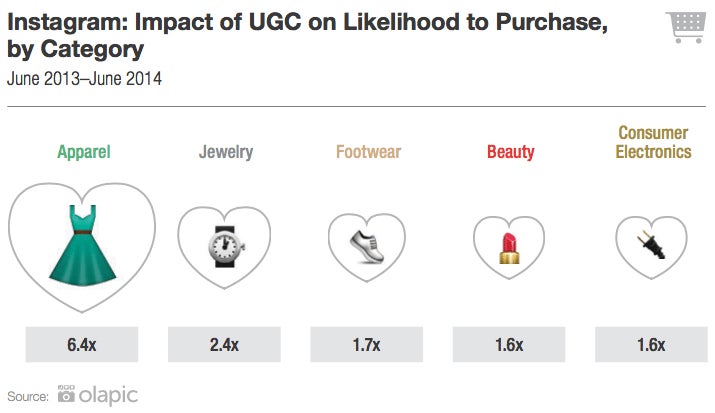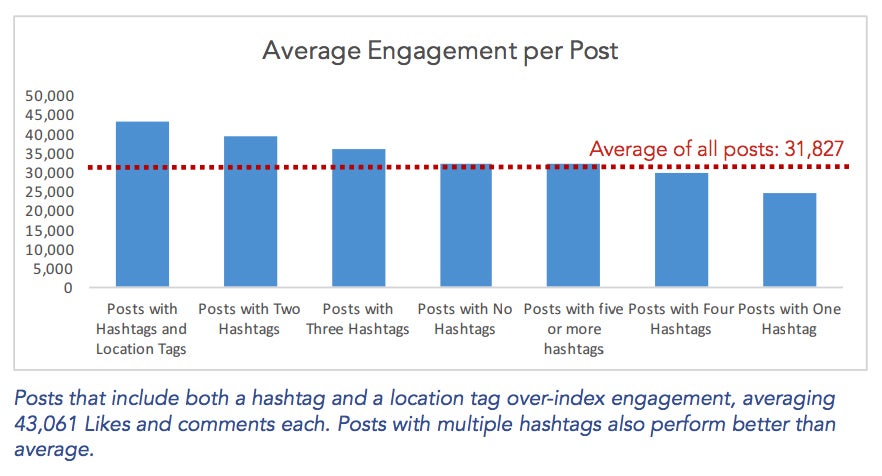8 Actionable Instagram Marketing Tips
These tips will help you grow your social presence.

This story originally appeared on Buffer
At Buffer, we’re big fans of using data and research to guide our social media strategy. So when it came to finding the best Instagram strategy, I turned to social media studies.
I read through more than 20 studies on Instagram marketing from companies like Facebook, Simply Measured and News Whip. Some analyzed the top Instagram accounts while some even studied tens to hundreds of thousands of Instagram posts.
Related: 10 Free Tools to Help You Understand Your Social Media Audience
Here’s what I learned from my look at the research.

8 Actionable Instagram marketing tips, backed by 20+ studies
The studies contain a ton of great information, and I distilled the key findings into eight actionable tips. Here are the eight tips to guide your Instagram strategy:
- Instagram’s young audience likes current, creative and useful content
- Posting frequency is not as important as posting consistency
- There isn’t a universal best time to post on Instagram
- Businesses cannot ignore Instagram Stories
- Using both hashtags and location tag drives the most engagement
- Videos might overtake images as the most engaging type of content
- User-generated content drives growth and conversions
- Caption length doesn’t affect engagement
1. Instagram’s young audience likes current, creative and useful content
According to Statista, an online market research portal, the largest user group on Instagram in the U.S. as of December 2016 was the 25 to 34-year-olds, which accounted for 25.2 percent of U.S. Instagram users. This is followed by the 18 to 24-year-olds, which form 20.6 percent of U.S. Instagram users.
Pew Research Center, a nonpartisan American think tank, also looked into the demographics of Instagram users in the U.S. They also found that “Instagram use is especially high among younger adults” — to a greater extent than Facebook, Twitter, LinkedIn and Pinterest.

Here are some highlights from Pew Research Center’s study on social media use in the U.S.:
- Fifty-five percent of online adults between the age of 18 and 29 use Instagram — the highest percentage among all age groups
- Thirty-three percent of online adults between the age of 30 and 49 use Instagram — the second highest percentage among the age groups
- A bigger percentage of women (38 percent) than men (26 percent) use Instagram
Instagram strategy takeaway:
If your target audience is between the age of 18 and 49, Instagram could be a great platform to reach your potential customers and engage your existing customers.
To help with your Instagram marketing strategy, Facebook interviewed and surveyed more than 12,000 teens and young adults and offered these recommendations on how to maximize Instagram’s potential for your business:
- Showcase what makes you special. If you can share a perspective that only you can offer, you can more likely connect with the teens and young adults on Instagram.
- Blend in to stand out. Instagram users prefer beautiful visual content and often post such high-quality content themselves. To engage them, you have to create similar high-quality images and videos.
- Inspire the moment. Teens and young adults in the study describe Instagram as current (42 percent), creative (37 percent) and useful (32 percent). Hence, they would expect such content from brands on Instagram.

2. Posting frequency is not as important as posting consistency
A common question we get is, “How often should I be posting on Instagram?”
We previously found that major brands post once or twice per day to Instagram. And some post as many as 10 times per day without seeing a significant fall in engagement.
Tailwind, a visual marketing tool, analyzed more than 100,000 Instagram posts and offered a plausible explanation for the high posting frequency: The more often you post on Instagram, the more likes and followers you gain.
They found that accounts posting more than seven times per week get more likes and grow their following faster than accounts that post less than seven posts per week.
Related: Never Run Out of Content: More than 70 Places to Curate Great Content
Tailwind also analyzed the engagement rates of accounts that increased their posting frequency. They found that when accounts posted more frequently, their engagement rate went up.
Union Metrics, which studied 55 brands on Instagram, also found a similar pattern.

But this doesn’t mean you should start posting several times per day. In fact, you probably shouldn’t. Union Metrics’ whitepaper mentioned two important points:
- Your audience might not be used to seeing several posts per day from you
- You might not have the time to create so much content and maintain your content quality
Instagram strategy takeaway:
Posting more frequently is great if your audience likes to see multiple posts per day from you and if you have the resources to constantly produce high-quality posts. Otherwise, posting consistently is more important.
If your followers are not used to seeing many posts per day from you, you could annoy them and cause them to stop following you. If you do not have a team working on your Instagram account, it’s likely challenging to consistently put out high-quality content several times a day. When you run out of content ideas and stop posting consistently, you risk losing followers, which Union Metrics discovered in their study.
Like Union Metrics suggested in their whitepaper, “Stick to a regular posting schedule, but generally don’t post more than a few times a day. One or two great posts a day is better than 10 mediocre posts.”
3. There isn’t a universal best time to post on Instagram
CoSchedule did a great job rounding up several studies on the best times to post on Instagram. Here are some of the studies and their findings:
- Huffington Post: 2 a.m. to 5 p.m. is the best time to post on Instagram
- MarketingProfs: 1 to 2 p.m. is best for engagement
- CoSchedule: Tuesday 2 p.m. could be the best time for driving traffic
Lifewire also looked at a few research and found several best times to post on Instagram. SumAll also compiled findings from a few sources (Visual.ly, Search Engine Watch and Social Media Today) and suggested this: 5 to 6 p.m. on weekdays and 8 pm on Mondays with a sweet spot at 6 p.m.

All the suggestions likely worked well for some businesses but certainly not all. This variety in “best” posting times points me to one conclusion.
There isn’t a universal best time to post on Instagram.
Instagram strategy takeaway:
If there isn’t a universal best time to post on Instagram, when should you post on Instagram? How do you make sense of these research?
Here’s my take: These research are great for you to form hypotheses of your best posting time. For example, like Lifewire suggested, “Around the lunch hour is when people get a break to do what they want; that often includes checking social media.” What you could do is to test posting around the lunch hour and outside of the lunch hour. Which posts did better?
You can also use tools like Iconosquare and Buffer to help you find your best time to post on Instagram by using your own Instagram data. Here’s how Iconosquare’s best time to post feature looks like:

4. Businesses cannot ignore Instagram Stories
Here are two interesting Instagram Stories statistics reported on Techcrunch:
- Instagram Stories generated, on average, 35 percent more views for brands than Snapchat Stories, according to the mobile video platform, dubdub.
- One in five Instagram Stories posted by businesses receives a direct message reply.
When Iconosquare wanted to study the effect of Instagram Stories on the engagement of Instagram posts, they asked more than 1,200 Instagram users, “Since the arrival of Stories, what do you spend most of your time on Instagram doing?”. They found that “in only 3 weeks, almost one-quarter of the Instagram users we surveyed have seemingly ditched their usual Instagram activity in favour of watching Stories.”

The shift in attention led to a fall in engagement on Instagram posts. When Iconosquare looked at the engagement rate of 60 top brands before and after Instagram Stories was launched, they discovered that engagement rate fell after Instagram Stories was launched. This finding was confirmed by several readers of the Iconosquare blog.

Instagram strategy takeaway:
A way to counter the drop in engagement rate is to follow the change in the behavior of Instagram users: to post Instagram Stories.
Klear, an influencer marketing platform, studied 149 top brands in eight industries to see how they have been using Instagram Stories. They found that 45 percent of the brands in their study are using Instagram Stories at least once per week. Some of the most active brands on Instagram Stories include McDonald’s, IBM, and Forever 21.
If you are not sure what to post in your Instagram Stories, Klear provided a breakdown of the ways brands in different industries have been using Instagram Stories:

For example, posting merchandise promotions was the most-common use of Instagram Stories in the fashion industry. I think it’s safe to assume that brands would post more of what’s working for them so the most-common use of Instagram Stories is likely also the best use of Instagram Stories for that industry.
Here are 10 free easy-to-edit Instagram Stories templates to help you get started.
5. Using both hashtags and location tag drives the most engagement
Unlike other social media platforms like Facebook, hashtags are a norm on Instagram. When studying the Instagram accounts of the top 100 global brands in 2014, Simply Measured found that 88 percent of their posts include at least one hashtag.
There’s a good reason for this. Using hashtags and location tag helps people discover your Instagram posts.
In the same study, Simply Measured found that posts with at least one hashtag generated an average of 13 percent more engagement while posts with a location tag received an average of 29 percent more engagement. This was confirmed by their 2015 study where they found that posts with hashtags and a location tag received the highest average engagement.
Instagram strategy takeaway:
If you want to increase your Instagram reach and engagement, use hashtags and location tag if possible.
After studying more than 65,000 social media posts, TrackMaven found that nine hashtags seem to be the optimal amount for getting the maximum engagement.
But you want to be mindful of not overusing hashtags. According to Iconosquare, overusing hashtags can lead to a shadowban on your posts where your posts don’t show up under the hashtags they’ve used. This will reduce the discoverability and reach of your posts and, in turn, reduce the engagement level.
6. Videos might overtake images as the best content type
On Facebook, it’s clear that videos have overtaken images as the best content type. But on Instagram, it’s still unclear.
According to studies by News Whip, L2 and Simply Measured, the average engagement of images are still higher than the average engagement of videos.
Related: What to Post on Each Social Media Platform: The Complete Guide to Optimizing Your Social Content

While it might seem that images are still the best content type on Instagram, there are some observations by News Whip that suggest videos might become the best content type soon.
- Top publishers, on average, get more likes on their images but more comments on their videos. (L2 found a similar trend.)
- The average engagement on videos is growing faster than the average engagement on images (53 percent increase vs 46 percent increase).
- Top publishers are posting more videos than before — up to 93 percent of their monthly posts.
Instagram strategy takeaway:
Whether videos will outperform images on Instagram will depend on each brand’s followers. The best you can do is to experiment with videos and compare their performance with your image posts. Your data will tell you which content type your followers like more.
When News Whip studied the top 20 publishers that post the most engaging Instagram videos, they found that the average video length is 30 seconds. This can be a great starting point when you are creating your videos. Here are the other tips that News Whip shared:
- Use relatable or pop culture memes relevant to your audience
- Show your viewers something they wouldn’t see every day
- Capture action-packed feats, stunts, or sports
- Offer inside peeks to celebrities or athletes
- Play around with appetizing collages or animations
- Focus on heartwarming stories
If you plan to create more videos, here are a few tools to help you.
7. User-generated content drives growth and conversions
As an anecdote, we grew our Instagram account by 540 percent in a year using user-generated content.
But let’s look at the data, too. L2 studied 250 brands in nine industries and discovered the wonderful impact of user-generated content on Instagram. Consumers who see a user-generated photo have a 4.5 percent higher chance of converting into a customer. This increases to 9.6 percent when the consumers interacted with the photo.
Furthermore, user-generated photos increase the likelihood to purchase by several times across various categories of goods — up to 6.4 times for apparels.

Even though it’s a study on (25 million user-generated) Facebook posts, Mavrck found that “user-generated content featuring a brand drove 6.9x higher engagement than brand-generated content”.
Instagram strategy takeaway:
Whether you want to increase your Instagram following, engagement or conversion rates, user-generated content is a great strategy to experiment with. Many big brands like REI, Ben & Jerry’s and GoPro curate the best photos from their customers and post them on their own Instagram account.
To help you get started, here’s our guide to creating a user-generated content campaign.
8. Caption length doesn’t affect engagement
The general recommendation for the Instagram caption is to keep it short. For example, Sprout Social suggests that 138 to 150 characters are the best for maximizing engagement.
I believe there’s a good reason for the recommendation: Instagram only shows the first three lines of a caption and hides the rest behind a “more” button.
Interestingly, Simply Measured found that while the average caption by the top 100 global brands is 138 characters long (including hashtags), “there is no statistically significant correlation between caption length and engagement.”
Instagram strategy takeaway:
I personally believe that there isn’t an ideal length for a caption. A caption should be as long (or as short) as it needs to be to convey your message. It could be an emoji or a 2,000-character paragraph.
That said, if you want your entire caption to be displayed on the Instagram feed, Instagram recommends keeping your caption to 125 characters or fewer. HubSpot follows that with a great advice:

At Buffer, we’re big fans of using data and research to guide our social media strategy. So when it came to finding the best Instagram strategy, I turned to social media studies.
I read through more than 20 studies on Instagram marketing from companies like Facebook, Simply Measured and News Whip. Some analyzed the top Instagram accounts while some even studied tens to hundreds of thousands of Instagram posts.
Related: 10 Free Tools to Help You Understand Your Social Media Audience











